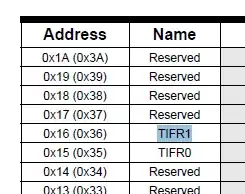There used to be very good reasons for keeping instruction / register names short. Those reasons no longer apply, but short cryptic names are still very common in low-level programming.
Why is this? Is it just because old habits are hard to break, or are there better reasons?
For example:
- Atmel ATMEGA32U2 (2010?):
TIFR1(instead ofTimerCounter1InterruptFlag),ICR1H(instead ofInputCapture1High),DDRB(instead ofDataDirectionPortB), etc. - .NET CLR instruction set (2002):
bge.s(instead ofbranch-if-greater-or-equal.short), etc.
Aren't the longer, non-cryptic names easier to work with?
When answering and voting, please consider the following. Many of the possible explanations suggested here apply equally to high-level programming, and yet the consensus, by and large, is to use non-cryptic names consisting of a word or two (commonly understood acronyms excluded).
Also, if your main argument is about physical space on a paper diagram, please consider that this absolutely does not apply to assembly language or CIL, plus I would appreciate if you show me a diagram where terse names fit but readable ones make the diagram worse. From personal experience at a fabless semiconductor company, readable names fit just fine, and result in more readable diagrams.
What is the core thing that is different about low-level programming as opposed to high-level languages that makes the terse cryptic names desirable in low-level but not high-level programming?
